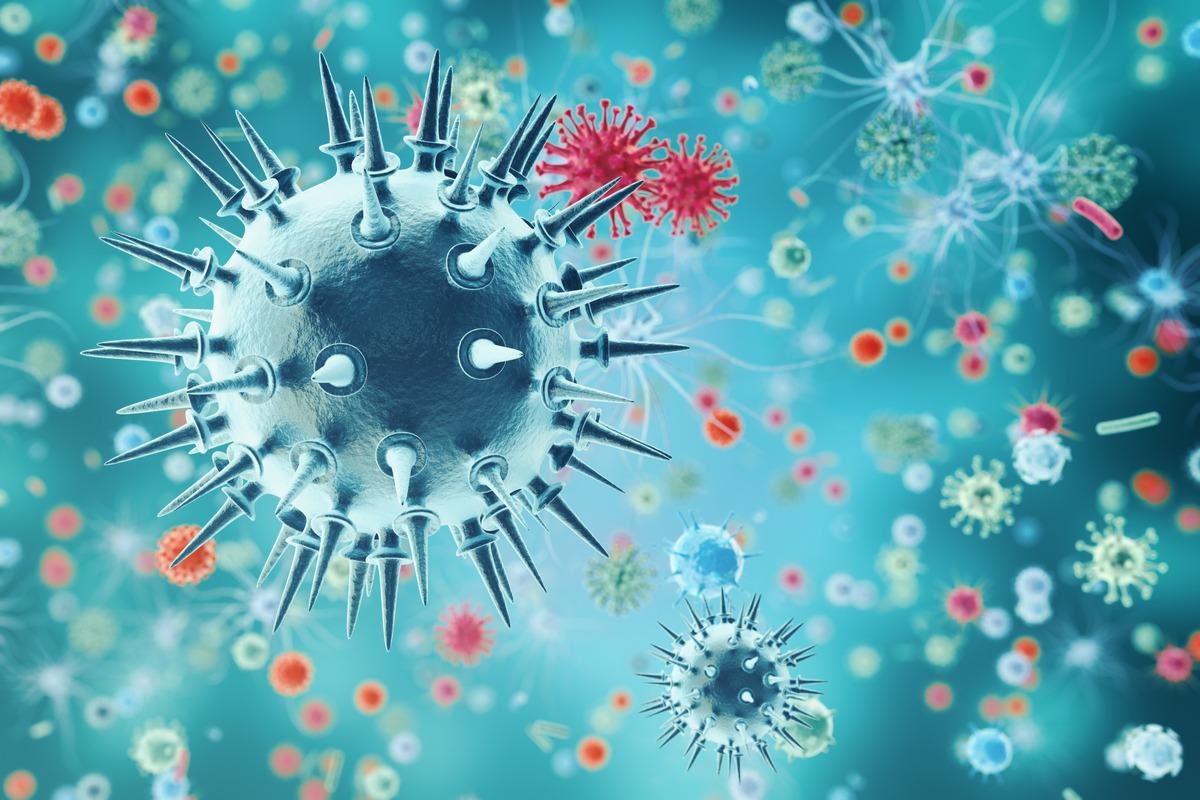Role of Glycoscience in Viral Surveillance - News-Medical.net
As more and more infectious diseases emerge caused by viral pathogens, global health is endangered as never before. A striking illustration of this is provided by the ongoing pandemic of coronavirus disease 2019 (COVID-19), caused by the severe acute respiratory syndrome coronavirus 2 (SARS-CoV-2).
Glycoscience comprises a broad range of knowledge and research on simple and complex carbohydrate metabolism, anabolism, structure, and function. Glycans are expressed in all microorganisms, including prions, as well as in all higher organisms; thus, it is not surprising that their biological and disease impacts are profound.

Image Credit: Rost9/Shutterstock.com
Background
Many viruses have glycoproteins that serve various essential functions in viral pathogenesis and transmission. These include protein folding and stabilization, viral infection by recognition of host receptors and binding to the host cell, and viral invasion, and immune escape of the virus from the immune system.
The glycoproteins involved contain glycans of different structures, densities, and distribution. Viruses with glycated envelopes include human immunodeficiency virus-1 (HIV-1), hemagglutinin glycoprotein (HA) of influenza virus, coronavirus glycoprotein spike (S), glycoprotein (GP) of Ebola virus, glycoprotein complex (GPC) of Lassa virus, and envelope (E) glycoprotein of dengue, Zika, and other flaviviruses.
The lipid envelopes are host-derived, but the envelope glycoproteins are virally encoded. At the same time, some glycans are typically present as decorations on the surface of the viral proteins and are self-glycans derived from the host via the host glycosylation pathways. The presence of these glycans enables the virus to escape detection and clearance by the host cell by preventing the activation of the cellular immune system.
The surface glycoproteins of the enveloped virus attach to the target host cell via interactions with cell receptors. Glycan-binding receptors are therefore also key to the virus-host cell interactions. The structure of the viral glycoproteins as well as the conformational changes induced by these moieties, are thus intimately involved in both virus invasion and spread.
Apart from envelope glycosylation, other viral proteins also show glycosylation, including the flavivirus non-structural protein 1 (NS-1), the Ebola GP, and the herpes simplex virus HSV secreted glycoprotein G (sgG). In this case, the glycans appear to confer function on the viral proteins, such as keeping replicase complexes intact.
Interactions between the glycoprotein and receptor are important in determining pathogen pattern recognition as well as immunoregulation. Glycosylation is necessary to ensure compatibility with the host cell by creating an immunological barrier to evade or avert the immune response of the host.
Importance in Epidemiology
Quantitatively identifying these glycoproteins is a useful method for detecting early infection and pathology and understanding the mechanism of disease. Such methods include enzyme-linked immunosorbent assay (ELISA), capillary electrophoresis, liquid chromatography, and high-performance anion-exchange chromatography.
The main disadvantages include their cost, complex pretreatment techniques, long turnaround time, operator skill, unstable physical or chemical nature, and the difficulty in obtaining antibodies. These make them unsuitable for large-scale applications during a time of crisis.
Researchers are therefore always attempting to develop a robust, simple, rapid, reliable, and cost-effective screening assay with high selectivity and stability, compared to the use of natural biological receptors. Protein glycosyl residues are thus essential for many infection-related molecular and cellular events.
Viral protein glycosylation is dependent on host cell machinery. The type, number, and location of the glycan residues depend largely on the genetic code and selection by immune escape mutations in the presence of antibodies. Moreover, glycosylation plays a large role in the folding and assembly of glycoproteins.
Changes in Viral Glycosylation
The premature budding off of some viral particles in the glycosylation pathway, or their translocation, may lead to the formation of atypical glycoproteins on the viral particles. In addition, many viruses do not secrete their glycoproteins via the classical pathway, instead trafficking the proteins from the endoplasmic reticulum to the cell membrane rather than going via the Golgi apparatus. The result is oligomannose-rich glycosylation of viruses, as in hepatitis C viruses.
Such results may distinguish between the replication of the virus within host cells vs a pseudoviral assay system during experimental work.
The cell or tissue within which the virus replicates also affects the viral glycosylation profile or range of profiles because of the availability of specific sets of enzymes for each cell. Species-specific glycosylation patterns may also be seen, which could, in part, influence species-wise viral tropism. The ability to detect the key mutations that enable the virus to jump across species barriers may be important, as it indicates the potential for zoonotic transmission.
Glycoproteins also differ with the viral species and strain. Since this is the case, tracking the glycans attached to the viral particles can help understand viral transmission and detect early cross-species leaps and local human outbreaks.
Glycans and Antigenic Drift
For instance, with the influenza virus, the H1N1 strain triggered the Spanish flu pandemic of 1918-19, causing infection of almost half the world's population, with death ensuing in up to 5% of the infections (50 million or more deaths in total). A mutated form of this virus reappeared in 2009, with an estimated 280,000 deaths, mostly because of the low population immunity to this novel strain.
The hemagglutinin glycoprotein is the immunodominant antigen, but its globular head region can undergo mutations that lead to immune escape. Low levels of glycosylation are often correlated with greater mutational changes at the antigens of the globular head. Antigenic drift is a phenomenon unique to the H1N1 virus among all the ribonucleic acid (RNA) viruses that infect the respiratory tract and contribute to the virus's escape from vaccine-induced immunity. It refers to the gradual change in viral antigens due to genomic mutations but not amounting to the emergence of a new subtype of the virus.
Comments
Post a Comment